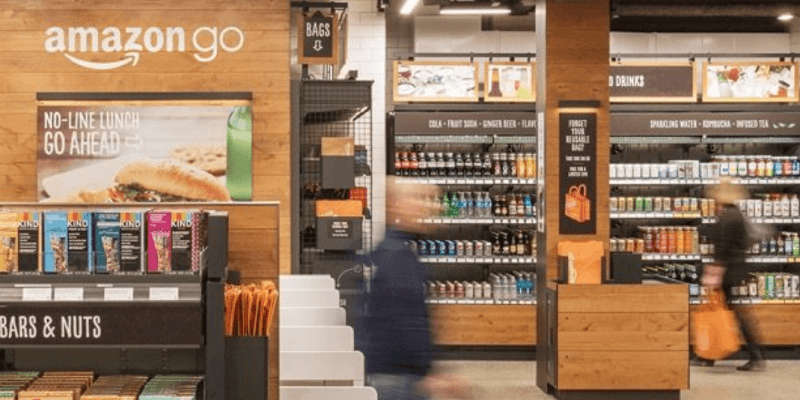Cashierless store? What the retail industry should know about Amazon Go
Almost a year after its announcement, the world’s first cashierless convenience store “Amazon Go” opened to the general public. Read now how this might change the retail industry for good.
The new Amazon Go store, situated in Amazon’s headquarters in Seattle, utilizes computer vision and machine learning calculations to track customers and charge them for what they select – automatically, withoud any employees needed.
In a meeting a week ago, Dilip Kumar, VP of innovation for Amazon Go and Amazon Books, said testing with employees has prepared the technology to work in the store, an investigation that is a piece of the organization’s more extensive push to rethink how shoppers shop. Kumar declined to state whether Amazon will further grow the Go idea, in spite of the fact that he said the organization has built up the innovation to scale.
Amazon reinvents the supermarket
Amazon reported the new Go store with ballyhoo in December 2016 and said it would open to the public in mid 2017.
The opening was postponed, as the concept proved to be more complex than anticipated, with glitches happening when an excessive number of individuals were in the store or were moving too rapidly.
Now, in early 2018, Go finally opened to the public. And there is one thing you can say by now: Amazon Go is no fancy superstore like Walmart, but is similar to 7 eleven.
Its selection of products basically revolves around food like sandwiches, drinks, salads and some ready-to-eat foods. Thanks to its acquisition of Whole Foods, there will also be several things from its 365 Everyday Value brands, such as nuts and chips. And, yes, there will also be alcohol inside.
You need inspiration on how to improve your business model?
Get the latest insights on innovative solutions for the retail industry.
Obviously, Amazon Go will not be the regular convenience store for customers. Considering this is Amazon, there’ll be a component of technology, automation and machine learning included – and its shopping platform, naturally. This comes via the largest advertised advantage of Amazon Go: no checkout lines.
The practice is straightforward, at least in theory. Before customers go to the shop, they first need to download the Amazon Go app in the Google Play Store or Apple App Store, and then log into their individual Amazon account.
Customers then start picking up items and supplies and place them in their cart.
When they are done, they just go out of the store and automatically get billed. Sounds like any rush hour shopper’s dream, right?
This seemingly charming and futuristic shopping method is made possible with a wide range of technology, both hardware and software. Cameras and detectors watch every movement of the visitors and analyze the things they take from the shelves. There are systems that connect to smartphones to add the items to the Amazon shopping cart. And of course, Amazon is using its own cloud solutions, machine learning, and likely face recognition.
Regarding any future of this business model, both customers and business owners should have privacy concerns in mind. Anyway, if Amazon succeeds with this store model, it may have another champ like its AWS. While the retailer seems to plan setting up physical stores somewhere else, it may be more productive to license the business model (and technology) for other companies.
Source of title image: Amazon
[plista]




